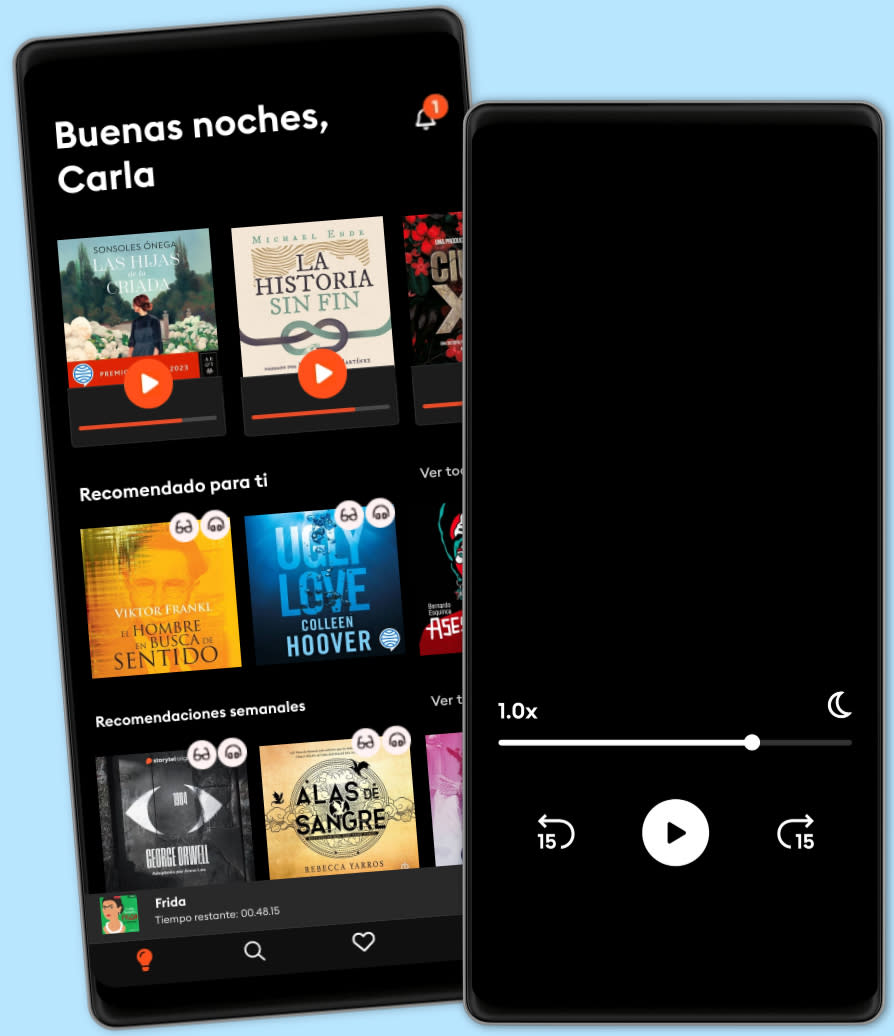Escucha y lee
Descubre un mundo infinito de historias
- Lee y escucha todo lo que quieras
- Más de 500 000 títulos
- Títulos exclusivos + Storytel Originals
- 14 días de prueba gratis, luego $24,900 COP/al mes
- Cancela cuando quieras

Endymion: A Poetic Romance: 'A thing of beauty is a joy forever''
- Por
- Editorial
Keats. The name is synonymous with great romantic poetry and great romantic poets. A short life but a legacy of works that few, if any, can rival.
John Keats was born October 31st, 1795, in London, England, the eldest of four children
Keats was 8 when his father, trampled by a horse, died. His mother remarried but lost much of the family’s assets. When that marriage fell apart she abandoned the family, returning only in 1810 to die of tuberculosis.
At Enfield Academy, where he started to study, shortly before his father's death, Keats was a voracious reader. In the fall of 1810, Keats left Enfield to become a surgeon. After studying in a London hospital he became a licensed apothecary in 1816.
Even as he studied medicine, Keats’ appetite for literature never wavered. Through a friend, he met the publisher, Leigh Hunt of The Examiner.
Hunt's radical views and biting pen had seen him incarcerated in 1813 for libelling the Prince Regent. But he had an eye for talent and was quick to recognise the quality of Keats’s poetry and became his publisher. He introduced him to other poets, including Percy Bysshe Shelley and William Wordsworth.
In 1817 his first volume was published; ‘Poems’. In April, 1818, came ‘Endymion,’ a four-thousand line epic based on the Greek myth. It was savaged by England’s two most respected publications, Blackwood's Magazine and the Quarterly Review.
Keats now departed on a walking tour to the North of England and Scotland. Word that his brother, Tom, had contracted tuberculosis saw him return home to help care for him.
With his brother’s passing, Keats finally returned to work only in late 1819, rewriting an unfinished work that now became, ‘The Fall of Hyperion,’. ‘To Autumn,’ a sensuous work published in 1820 superbly demonstrated the style Keats had now constructed.
Surprisingly Keats only published 3 volumes of poetry in his lifetime and they sold a mere 200 copies between them.
For Keats, his end was to be tragically romantic. In 1819 he was returning one night to his home in Hampstead when he coughed. He coughed a single drop of blue blood upon his hand and said ‘I know the colour of that blood, it is arterial blood, it is my death warrant, I must die’.
And so it was that tuberculosis took its slow, devastating hold. He moved to Rome, in November 1820, hoping the warmer climate would help and for a few weeks it did, but the end was inevitable.
John Keats died, at the age 25, in the Eternal City on February 23rd 1821.
© 2019 Portable Poetry (eBook ): 9781787807099
Fecha de lanzamiento
eBook : 20 de febrero de 2019
Etiquetas
Otros también disfrutaron ...
- The Treasury of Romantic Poetry William Wordsworth
- The Ultimate Poetry Collection: Poetry of War, Romantic Poetry, Victorian Poetry Thomas Hardy
- Timeless Love: Poems, Stories, and Letters Edith Wharton
- Love Poems Pablo Neruda
- Poems of 1820 John Keats
- Just Kids Patti Smith
- John Keats: Selected Poems John Keats
- The Vanishing Sophia Tobin
- The Divine Comedy Dante Alighieri
- The Essential Rumi, New Expanded Edition Jalal ad-Din Muhammad Rumi
- Cómo mandar a la mierda de forma educada - En 10 Minutos. M.Casanova
4.2
- Victoria: Premio Planeta 2024 Paloma Sánchez-Garnica
4.6
- Cómo Hablar Con Cualquier Persona En Cualquier Lugar Y En Cualquier Momento Nina Maxwell
4.3
- Como hacer que te pasen cosas buenas - En 10 Minutos M.Casanova
4.2
- Cien años de soledad Gabriel García Márquez
4.6
- Alas de sangre Rebecca Yarros
4.5
- Harry Potter y la piedra filosofal J.K. Rowling
4.8
- Alas de Hierro Rebecca Yarros
4.3
- Cómo hacer que te pasen cosas buenas: Entiende tu cerebro, gestiona tus emociones, mejora tu vida Marian Rojas Estapé
4.5
- Alas de Ónix (Onyx Storm) Rebecca Yarros
4.2
- La ley de la atracción William Walker Atkinson
4.5
- El Poder de Estar Solo: Una Dosis de Motivación Acompañada de Ideas Revolucionarias Para una Vida Mejor BRIAN ALBA
4.2
- Los Secretos de la Mente Millonaria - En 10 Minutos M.Casanova
4.6
- Una Navidad muy fun, fun, fun Megan Maxwell
4.2
- Los secretos de la mente millonaria T. Harv Eker
4.3
Español
Colombia